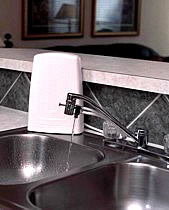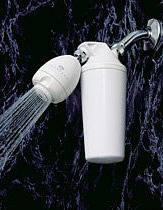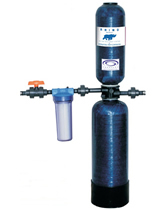
Reverse Osmosis Filters Are Wastful, And They Strip Vital Minerals Out Of Your Drinking Water
Reverse osmosis water filters or commonly known as RO Systems are amongst the most popular water filters on the market. Unfortunatly for all the consumers who purchase these filters they’re also far behind other types of water filtration technology. For a more advanced, and effective filter we reccomend Aquasana water filters
How Reverse Osmosis Water Systems Work
efore we get into the bad things about reverse osmosis I want to quickly cover how they work.
It starts with a membrane that only allows pure water or solvent to flow through it. It forces the water or solvent to pass through the membrane from high solute content region to low solute content region. For industrail use a reverse osmosis system is good for eliminating a wide range of contaminants such as chemicals, heavy metals like lead and heavy salt contents. The complete system strips out lead, copper, arsenic, cadmium, chlorine, Guardia, pesticides, salt, tri-halo-methanes, sulfates, cysts, and nitrates. It uses three tiered filter mechanism that filters out even small bacteria and viruses. It filters out smaller microbes as well that keeps your drinking water very safe.
But as you’ll see in a minute reverse osmsis technology is not the best choice for filtering drinking water…
The Downside Of Reverse Osmosis
Reverse osmosis water filters have some major disadvantages when it comes to filtering drinking water that make them inferior to other types of filters and more expensive. First of all reverse osmosis water filters waste a lot of water. Reverse osmosis water filters waste 2 to 4 gallons of water for each gallon of water purified. In some cases it may require 3 to 10 gallons of untreated water to make a single gallon of purified water.
Since the reverse osmosis process works against the standard osmotic pressure, the process is very long. You can get only about 15 gallons of purified water in day. The lesser water rejected means shorter the life span of the filter. The rejected water helps to keep the membrane clean. To prevent the membrane from fouling it requires sediment and pre-carbon filtration. This usually comes as a part of the system. But in order to reduce membrane fouling and gain optimum performance from the membrane it is vital to replace the carbon and other pre-filters at regular intervals. Moreover, the reverse osmosis membrane made up of thin film composite or TFC also needs to be replaced every two to three years.
Unlike the Aquasana AQ-4000 Installing an RO system is also not a simple task. You’re likly to spend two hours under the sink, installing any reverse osmosis water filter, and most people will need a plumber to do the job which can cost $100’s of dollars.
The Health Risks Of Using A Reverse Osmosis Water Filter
When water is passed through a reverse osmosis filter it not only removes the contamination, it stripps the water of all the good stuff too!
Some people don’t realize how many vital mineral we get from our drinking water. Our water contains calcium‚ potassium, magnesium. Reverse osmosis removes all these benefical minerals, leaving you with “dead water”. This is especiall bad for growing kids whose bodies despretly need those minerals.
Price for any simple reverse osmosis water filters starts from $200 and above. The additional costs involved are those of replacemeing the membrane, carbon, pre-filters, and installation.



